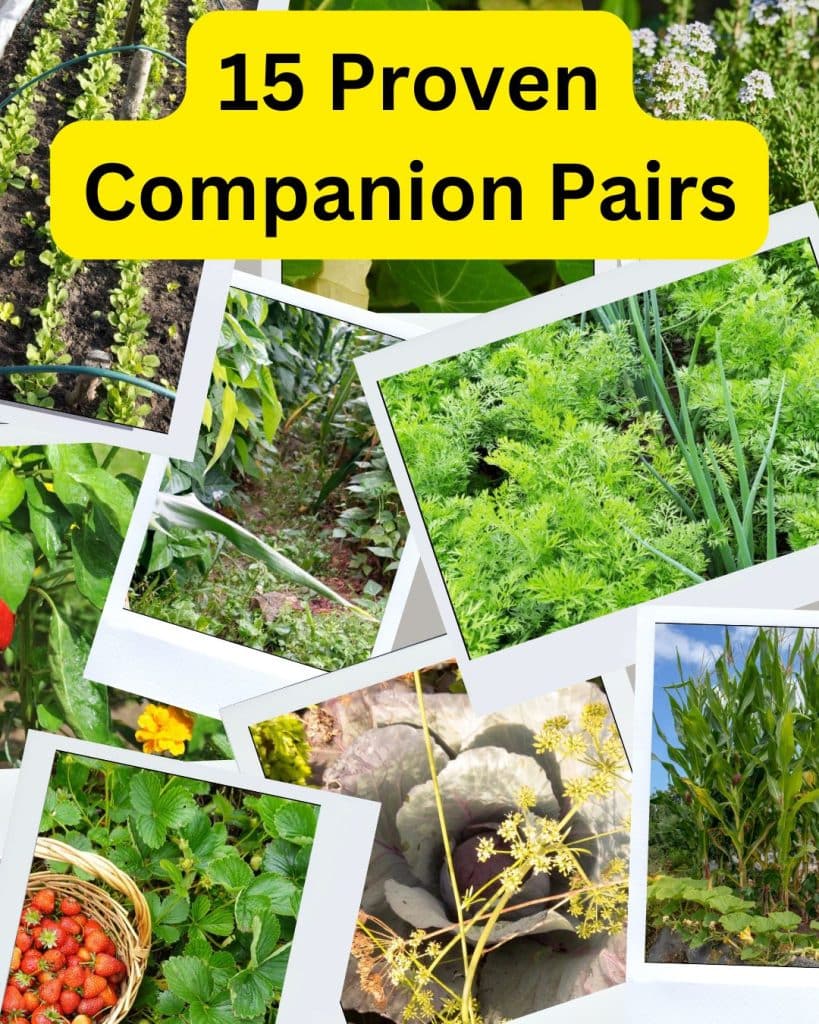
A Quick Hello to Companion Planting
Gardening can feel like a fascinating puzzle, with each piece needing just the right spot.
One of the most satisfying discoveries is how certain plants thrive side by side, helping each other stay strong, fight off pests, and taste better than ever.
Below are 15 time-tested pairs that bring extra life, flavor, and color to a garden.
1. Tomatoes & Basil
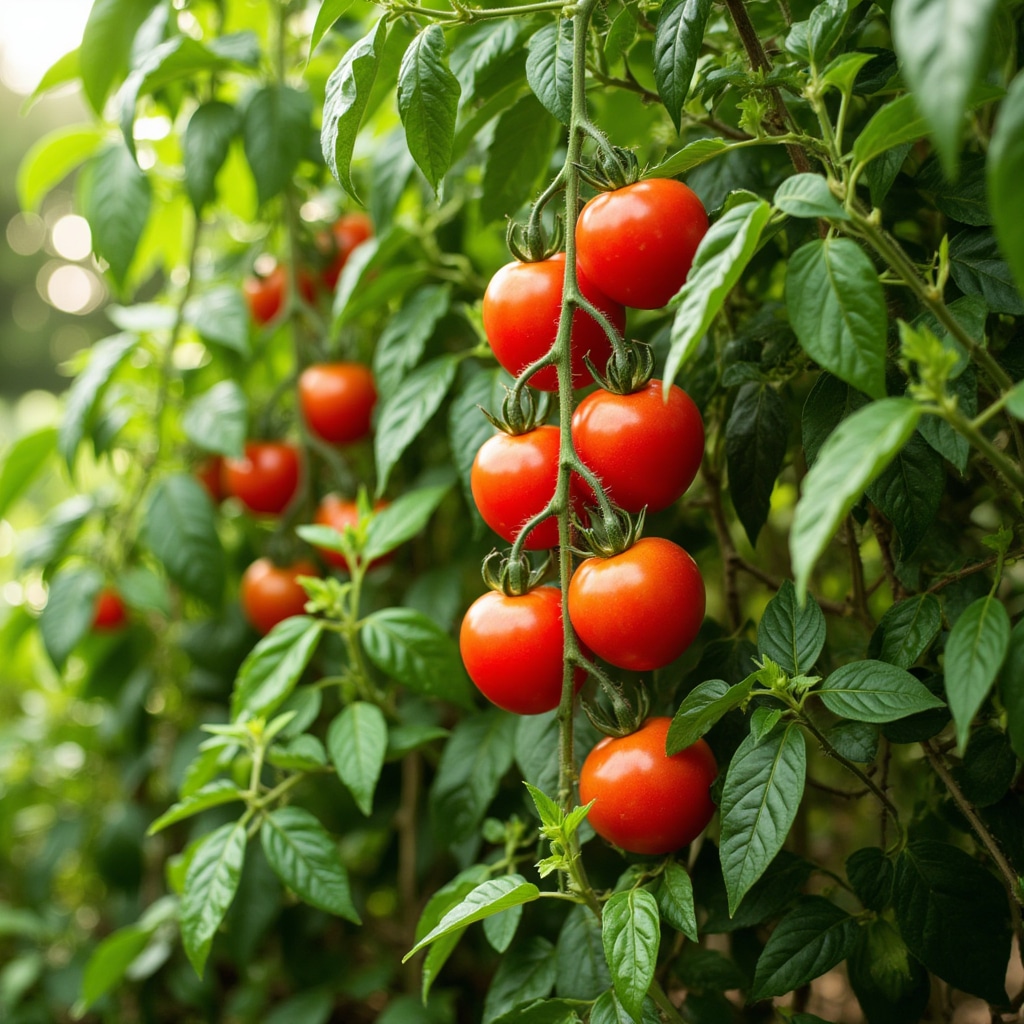
Why They Work
Tomatoes and basil make a well-loved duo. Basil’s distinctive aroma helps deter insects like mosquitoes and flies. There’s also a long-standing belief that growing basil close to tomatoes can enhance the tomatoes’ taste, giving them a deeper, more robust flavor.
Beyond this flavor boost, basil’s presence often reduces pesky pests that can hamper tomato development. It’s like having a personal guard for those ripening red gems.
Planting Tips
- Spacing: Make sure tomatoes have enough room to spread their roots and leaves. Position basil plants around the tomato bed without crowding them. A good rule of thumb is to place a few basil plants around each tomato, leaving around 12 to 18 inches between each basil plant.
- Sunlight: Both basil and tomatoes like full sun. Aim for six to eight hours of sunshine daily. Basil might appreciate some partial shade if the heat becomes extreme, but it generally loves the sun just as much as tomatoes do.
- Soil & Watering: Both appreciate well-drained, fertile soil. Keep the soil consistently moist but not waterlogged, especially during fruiting for tomatoes. Mulching helps conserve moisture.
Additional Advice
- Harvesting Basil: Snip the basil leaves from the top to encourage bushier growth. Frequent harvesting keeps basil from going to seed too soon, allowing it to continue protecting and assisting your tomatoes.
- Pest Concerns: Look out for aphids or whiteflies on tomato leaves. If they appear, use a gentle spray of water or a natural insecticidal soap. Basil’s scent should keep them at bay, but regular checks prevent larger infestations.
2. Carrots & Onions
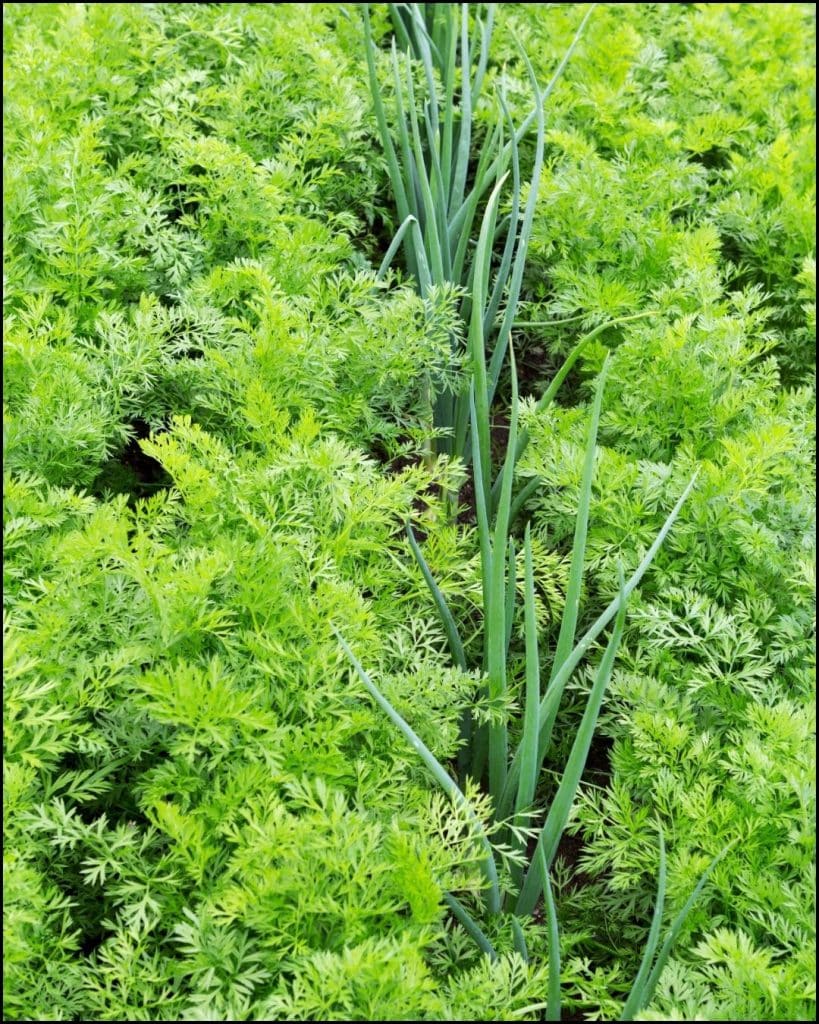
Why They Work
Carrots and onions might look like unlikely friends, but they help each other a great deal. The strong smell of onions can confuse carrot flies, a common pest that loves to lay eggs around carrots.
Meanwhile, carrots coexist happily with onions because they don’t hog resources. Their root structures tap into different layers of soil, so each plant gets what it needs without stepping on the other’s toes.
Planting Tips
- Intercropping: Place a row of onions near or between rows of carrots. You don’t have to mix them every other plant, but interspersing them in the same bed is effective. If you have space, try alternating rows: one row of onions, one row of carrots, and so on.
- Soil Prep: Both prefer loose, well-draining soil. Carrots need soil that isn’t too compacted, allowing them to develop properly without becoming misshapen.
- Watering Needs: Carrots need consistent moisture to develop their roots evenly. Onions appreciate regular watering but can handle slightly drier conditions once established. Watch the soil moisture levels so carrots don’t split from overwatering.
Additional Advice
- Harvest Timing: Carrots can be harvested when they reach your desired size. Young carrots are sweet and tender, but letting them mature helps you get a larger yield. Onions are usually ready once their tops start to flop over and dry out.
- Pest Control: To further discourage pests, consider using natural barriers like row covers early in the season. This added layer of protection can keep flying insects away from vulnerable seedlings.
3. Beans & Corn
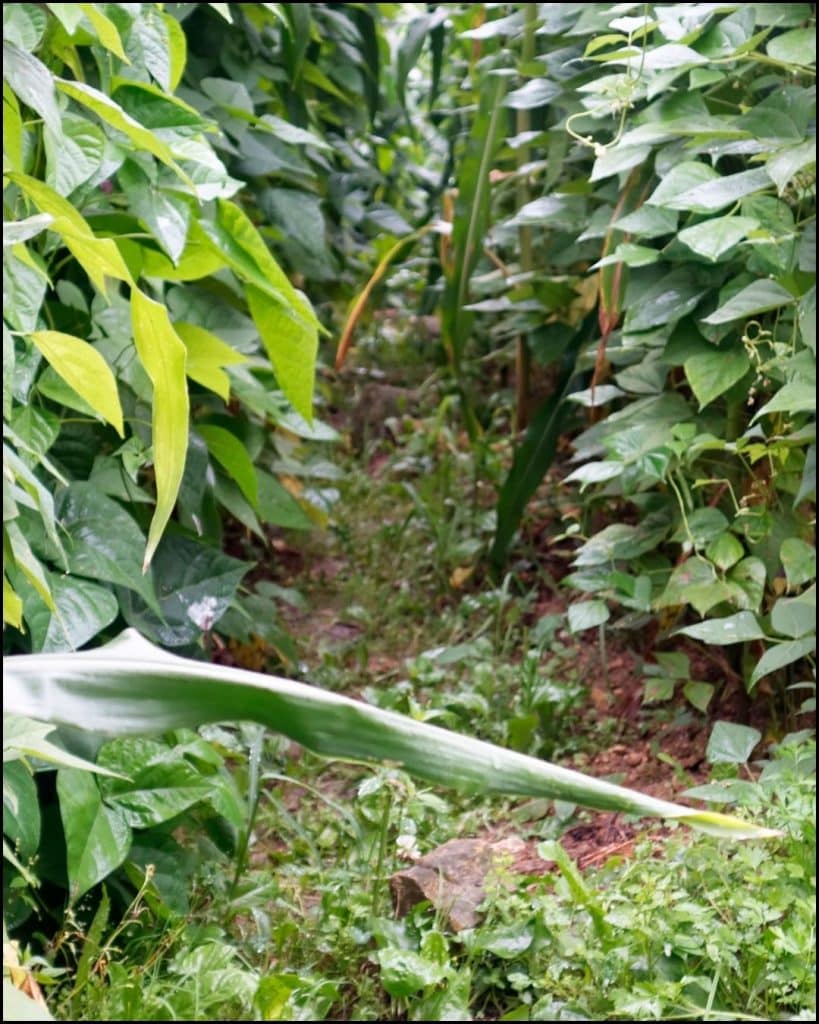
Why They Work
Beans and corn are part of a historic planting system called the “Three Sisters,” traditionally involving beans, corn, and squash. Even when grown without squash, beans and corn shine together.
Corn offers a living trellis for climbing bean varieties, saving space and effort. Beans, in turn, help fix nitrogen into the soil, enhancing fertility for themselves and the corn.
Planting Tips
- Choosing Bean Varieties: Pole beans are best for climbing up corn stalks. Bush beans won’t climb much, so pick a vining variety if you want them to latch onto the corn.
- Timing: Plant the corn a couple of weeks before the beans. This head start ensures the corn stalks are tall enough to support the bean vines as they start to climb.
- Spacing & Support: Space the corn plants so they’re not too crowded. When the corn seedlings reach about 6 inches high, plant beans around the base of each corn stalk. If you live in an area with high winds, consider grouping your corn in blocks rather than single rows for extra stability.
Additional Advice
- Soil Health: Beans add nitrogen to the soil, but they still need balanced nutrition. Mix in organic compost to support corn’s heavy feeding requirements.
- Maintenance: Keep an eye on the growth rate of the beans. They can climb fairly quickly and may need gentle guidance to latch onto the corn. Avoid tugging on the vines too forcefully to prevent damaging the corn stalks.
4. Lettuce & Radishes
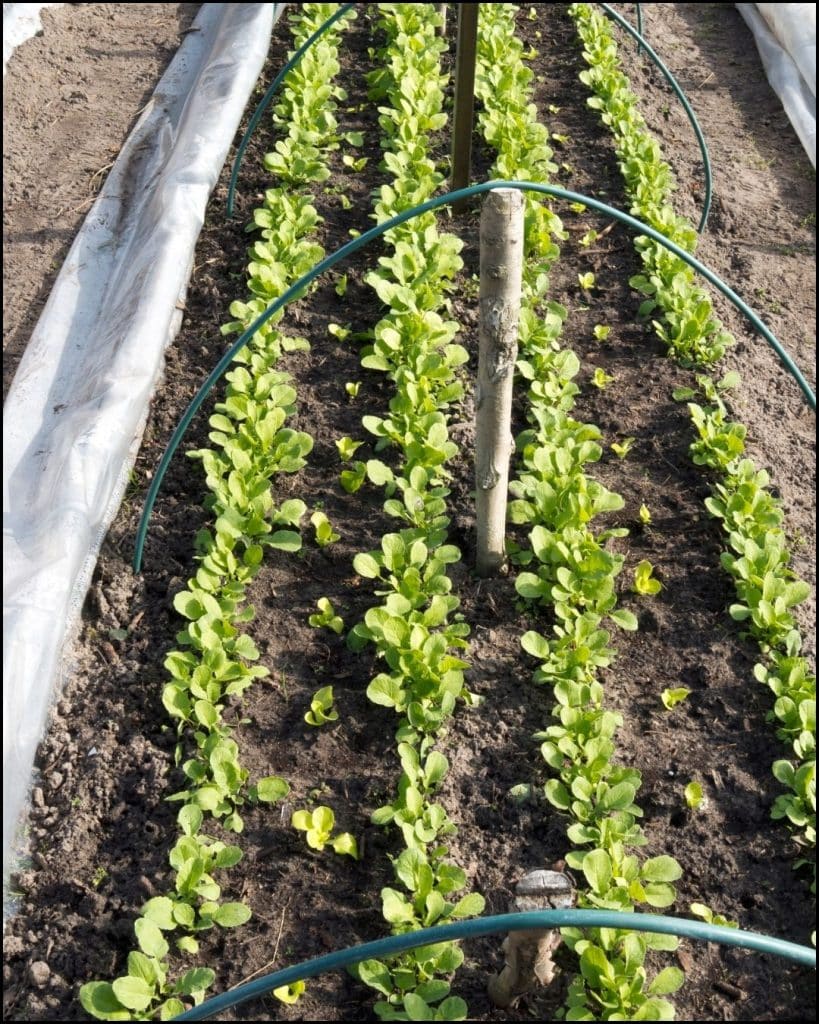
Why They Work
Lettuce grows low and appreciates cooler conditions, while radishes develop swiftly and don’t crowd out lettuce leaves.
Radishes can help deter certain insects that might otherwise nibble on delicate lettuce leaves. By pairing them, you maximize limited gardening space and reap two harvests with distinct flavors and textures.
Planting Tips
- Row Arrangement: Plant a row of lettuce, leaving about 8 to 10 inches between each lettuce seedling. Then place radish seeds in between these rows or among the lettuce plants. Radishes grow quickly, so you can harvest them before the lettuce matures fully.
- Soil Conditions: Both like rich, well-draining soil. Lettuce prefers consistent moisture to keep leaves tender, while radishes need regular watering for proper root development.
- Shading: Radishes can handle a bit more sun, but they also do well in partial shade. Lettuce is quick to bolt (go to seed) in high heat, so a bit of shade from taller plants or partial afternoon shade helps them last longer.
Additional Advice
- Harvest Overlap: Radishes usually mature in about three to four weeks. You can pluck them out without disturbing the lettuce much, freeing up room for the lettuce to continue growing.
- Pest Reduction: Though radishes may keep some pests away, continue to check for slugs or snails that enjoy dining on lettuce leaves. A little diatomaceous earth around the lettuce can deter slimy visitors.
5. Cucumbers & Nasturtiums
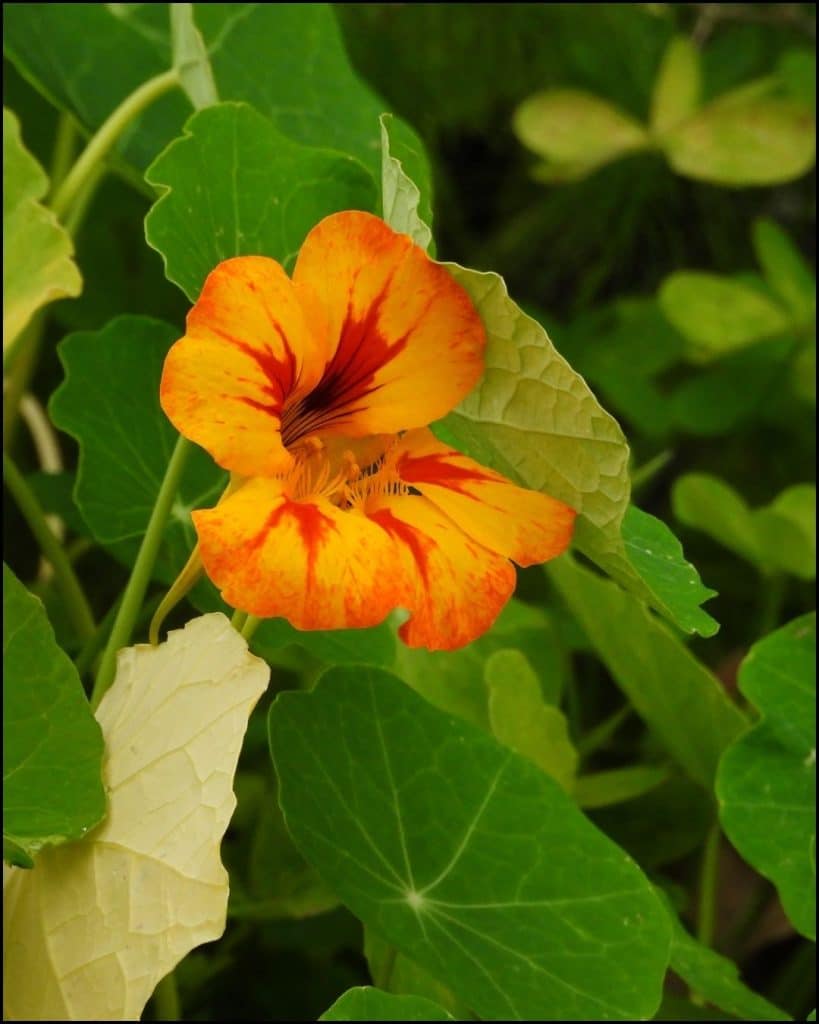
Why They Work
Nasturtiums are colorful, edible flowers that do a fine job of luring aphids away from cucumbers. Aphids love nasturtiums, often flocking to the flowers instead of settling on cucumber vines.
This reduces the pressure on your cucumbers and can limit damage to the leaves and developing fruits.
Planting Tips
- Trap Cropping Method: Plant nasturtiums in a ring or border around your cucumber patch. This setup helps ensure that aphids attack the outer ring of nasturtiums first, keeping the cucumbers safer in the center.
- Sunlight & Soil: Both cucumbers and nasturtiums love sunlight. They aren’t too picky about soil, but well-draining soil is always a plus for healthy growth.
- Watering Routine: Cucumbers like consistent watering to avoid bitterness in the fruit. Nasturtiums can handle drier spells but still produce better flowers with moderate watering.
Additional Advice
- Flower Power: Nasturtiums produce vivid blooms that attract beneficial pollinators like bees and hummingbirds. This boosts pollination for your cucumbers, potentially increasing yields.
- Edible Uses: Don’t forget that nasturtium flowers and leaves are edible, adding a peppery flavor to salads. This means you’re not just sacrificing them for aphids; you can still enjoy a few blossoms yourself.
6. Squash & Beans
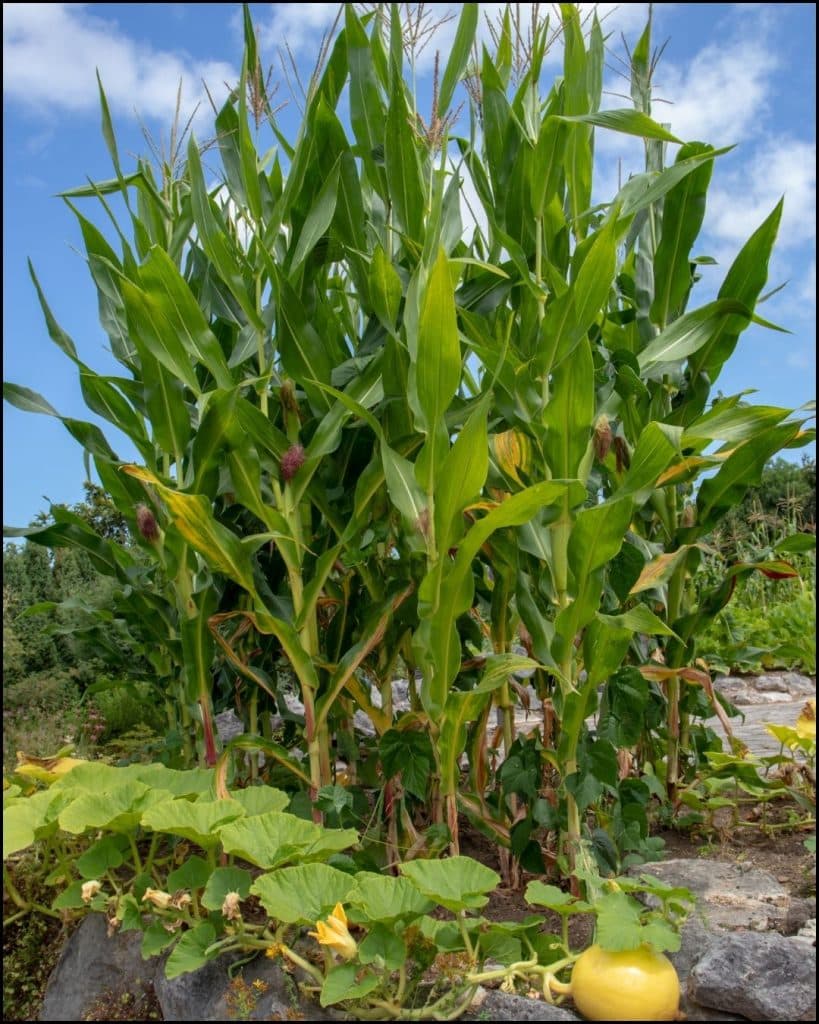
Why They Work
Squash and beans are also two parts of the “Three Sisters” trio. The large, broad leaves of squash help shade the soil, retaining moisture and reducing weeds.
Beans, again, work their nitrogen magic, helping keep the soil fertile. Both sets of roots occupy different levels of the soil, so they typically don’t compete heavily for nutrients.
Planting Tips
- Timing & Layout: Plant squash seeds or seedlings in hills or mounds. Once the squash is established, place bean seeds or transplants close by. Make sure there’s a trellis or structure for the beans to climb if they’re a vining type.
- Weed Control: Since squash leaves spread out, they suppress weed growth by blocking sunlight. This makes garden maintenance easier for you.
- Water Management: Both plants enjoy consistent moisture. Drip irrigation or soaker hoses can help you deliver water near the roots without splashing the leaves.
Additional Advice
- Pollinator Friendly: Squash has both male and female flowers, requiring pollinators for fruit development. Encourage native bees and other pollinators by planting nearby flowers or allowing some wildflowers to thrive around your garden.
- Harvest Tips: Pick beans regularly to encourage continued production. Check squash frequently; zucchini and summer squash can grow large in just a few days, so harvest them when they’re still tender.
7. Cabbage & Dill
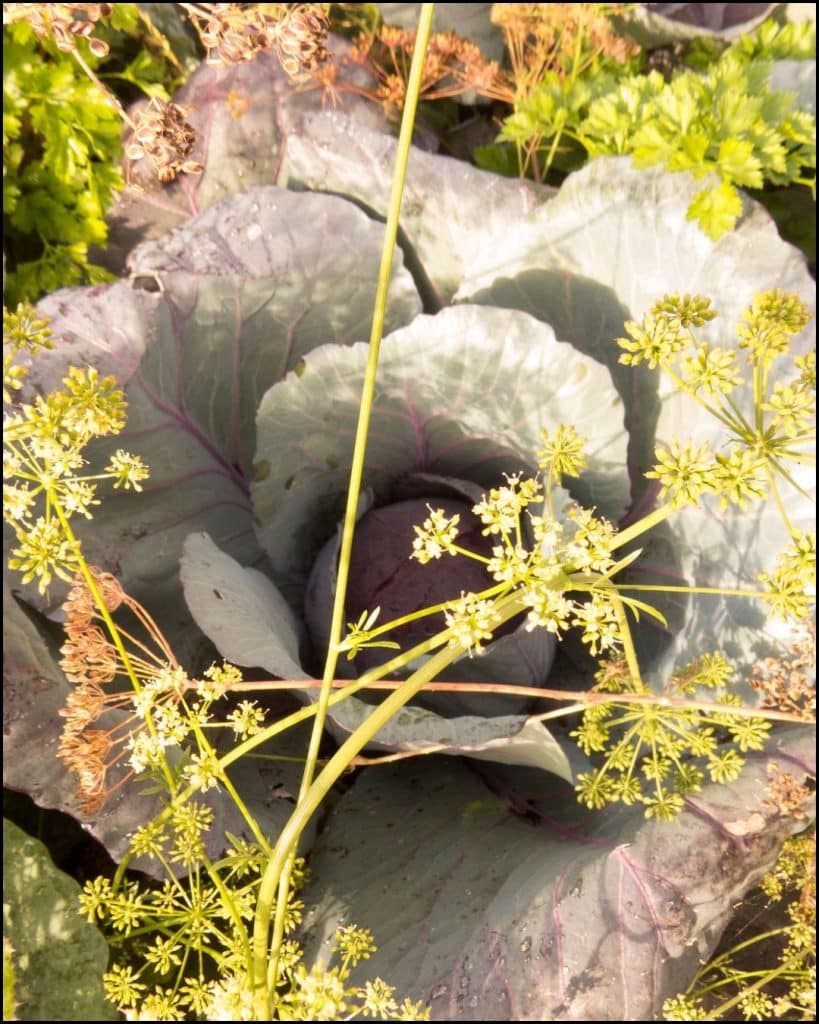
Why They Work
Cabbage often attracts pests like cabbage worms, loopers, and other insects. Dill releases a strong scent that confuses these pests, making it harder for them to zero in on the cabbage.
Dill also attracts beneficial insects like parasitic wasps, which prey on the very pests that target cabbage.
Planting Tips
- Scatter Method: Instead of planting dill in one large cluster, place smaller groups of dill throughout your cabbage patch. This increases the protective scent barrier for all your cabbages.
- Growth Requirements: Dill likes well-draining soil and can handle full sun. Cabbage also enjoys sun but appreciates consistent moisture. Adding organic mulch around both can help with water retention.
- Avoid Crowding: Dill can grow tall and lanky. Ensure it doesn’t overshadow the cabbage heads, which need room to grow. Leave some space so the cabbage leaves can unfurl properly.
Additional Advice
- Bolting Concerns: Dill can bolt in hot weather, producing flowers and seeds quickly. Let some go to seed to attract beneficial insects, but pinch off extra flowers if you want to prolong leaf production for your kitchen.
- Companion Benefits Beyond Cabbage: Dill can also help with other brassicas like broccoli and kale. Its scent and ability to attract beneficial insects make it a versatile companion in any garden bed.
8. Spinach & Strawberries
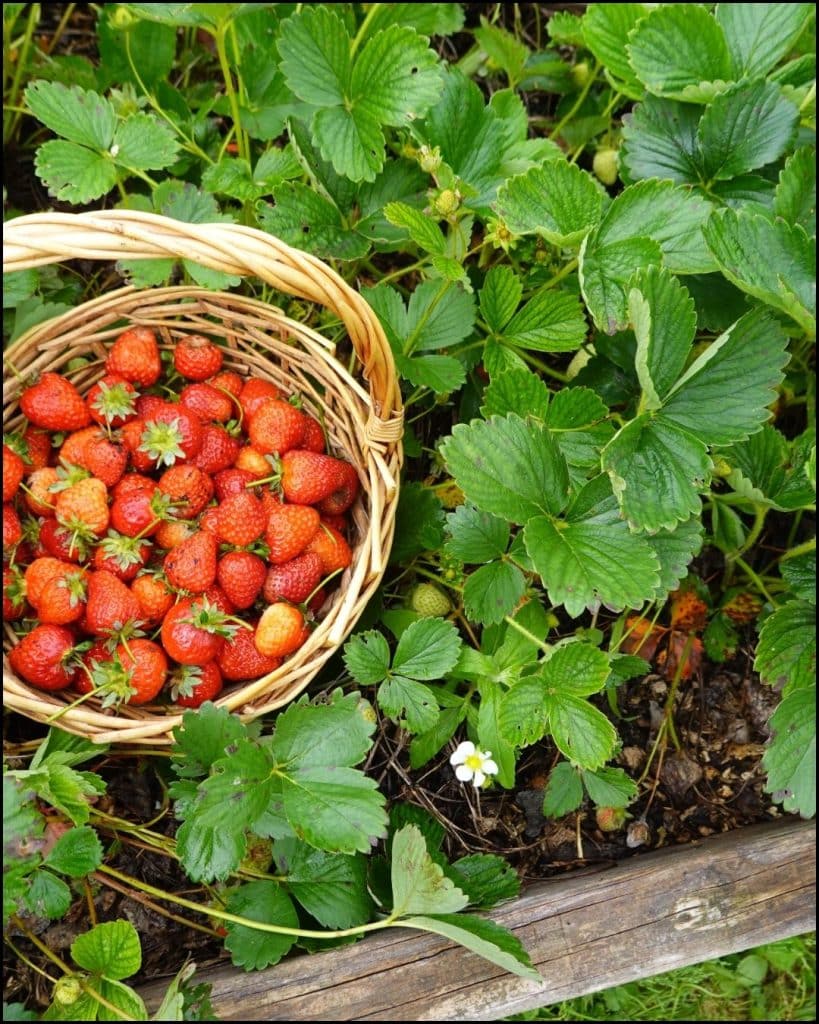
Why They Work
Spinach grows quickly in cooler temperatures, while strawberries are perennial plants that can handle varied conditions.
When grown together, spinach uses the space between strawberry plants without interfering with the strawberries’ ability to spread.
The shallow roots of spinach don’t intrude too much on the root system of strawberries, making these two good neighbors.
Planting Tips
- Shared Bed Approach: Plant strawberries in rows or mounds and tuck spinach seeds or transplants in the gaps, leaving a comfortable space of several inches. As spinach matures and is harvested, strawberries can continue to develop around them.
- Season Extension: Spinach thrives in early spring or fall, times when strawberries might not be in peak production. This staggered approach means you get more from a single bed throughout the season.
- Soil & Water: Both like rich, organic soil. Strawberries love consistent moisture for the best fruit quality, and spinach tends to taste sweeter when it’s not water-stressed.
Additional Advice
- Harvest Overlap: Spinach can be harvested leaf by leaf, allowing you to pick what you need for fresh meals. Meanwhile, strawberries will start producing sweet berries once the weather warms, giving you a two-in-one treat from the same patch.
- Pest Precautions: Keep an eye out for slugs. They can damage strawberries and spinach leaves. Handpick them or use a natural deterrent, such as diatomaceous earth, around the base of plants.
9. Eggplant & Thyme
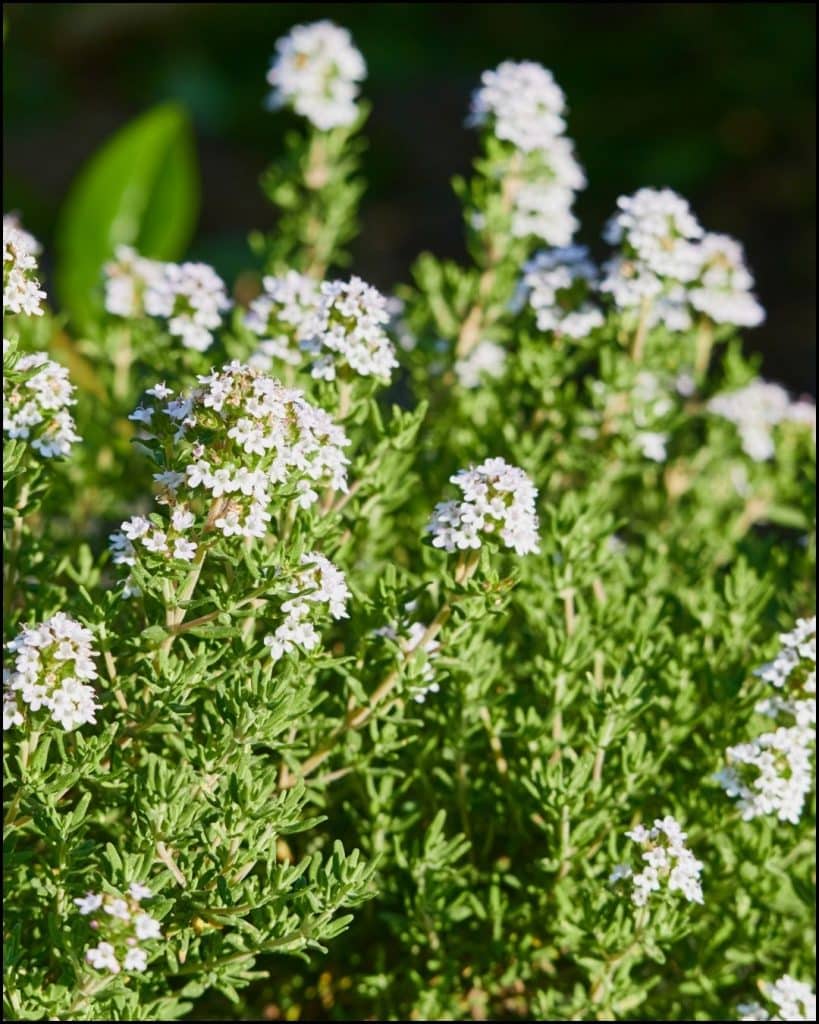
Why They Work
Eggplants can fall victim to pests like aphids, spider mites, and whiteflies. Thyme’s aromatic oils can repel some of these harmful insects. Thyme also doesn’t hog space, thanks to its low-growing habit. It can act as a living mulch, helping to conserve soil moisture around the eggplant’s base.
Planting Tips
- Perimeter Planting: Surround your eggplant bed with thyme to create a subtle barrier of scent. Alternatively, tuck thyme plants at intervals in the same row as eggplants, leaving enough space so neither plant is overcrowded.
- Soil Preferences: Eggplants need nutrient-rich, well-draining soil and full sun. Thyme prefers similarly well-draining soil but can handle more moderate fertility. Both plants enjoy warm weather.
- Watering Needs: Eggplants thrive with consistent moisture, especially during flowering and fruit set. Thyme, being drought-tolerant, requires less water. Aim to water the eggplant at its base, making sure thyme isn’t overwatered.
Additional Advice
- Harvesting Eggplants: Pick them while they’re still shiny and firm. Overripe eggplants can become seedy and bitter. Frequent harvesting encourages the plant to produce more fruit.
- Thyme Trimming: Clip thyme leaves whenever you need them for cooking. Trimming helps the plant stay bushy and healthy, giving you a robust herb that also repels garden pests.
10. Peppers & Marigolds
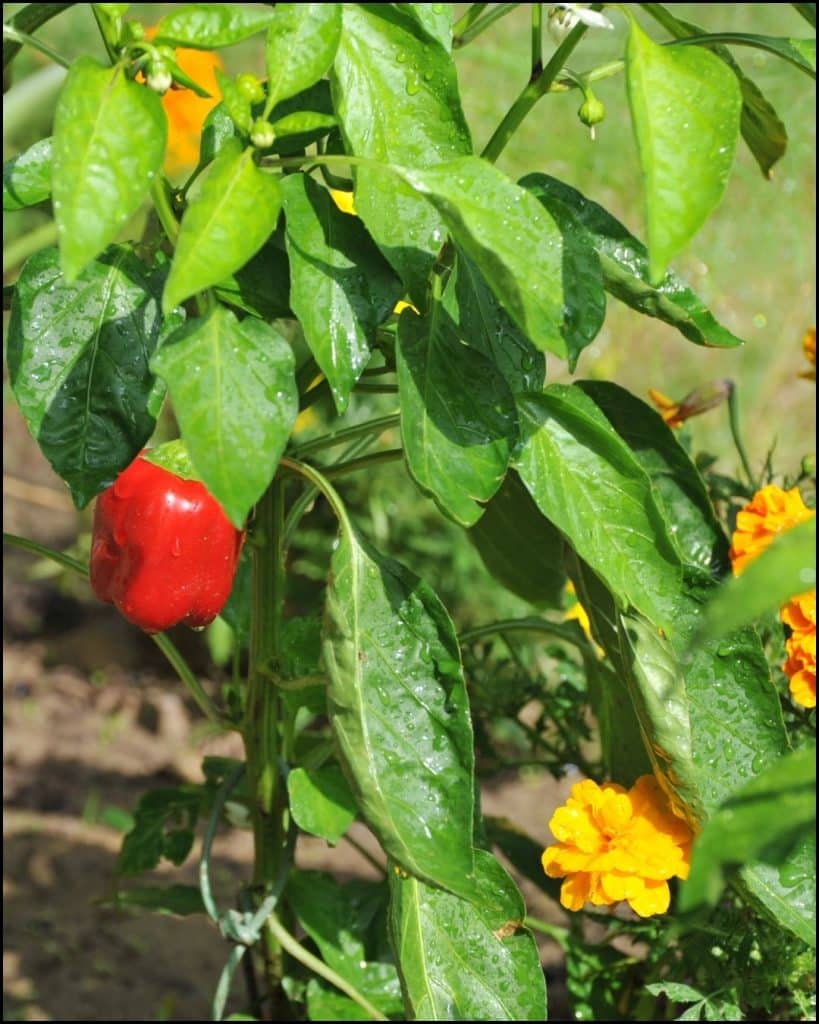
Why They Work
Marigolds are known for their bright blooms and strong aroma, which can deter many common garden pests.
They’re especially helpful near peppers, reducing issues like nematodes in the soil and discouraging aphids or whiteflies that might target pepper plants.
This pairing often leads to healthier pepper plants with fewer insect problems.
Planting Tips
- Arrangement: Place marigolds around pepper plants in containers or in the ground. They serve as a vibrant border or interspersed companion.
- Lighting & Soil: Both peppers and marigolds do well in full sun. They’re not overly picky about soil but do best in fertile, well-draining ground. Regular compost additions benefit both.
- Water Management: Peppers need steady moisture, especially during fruit development. Marigolds can handle brief dry periods but still appreciate moderate watering. A layer of mulch around peppers helps maintain a stable moisture level.
Additional Advice
- Marigold Varieties: French marigolds are often cited as the most beneficial for reducing nematodes. Explore different heights and colors if you want a varied look.
- Harvesting Peppers: Pick peppers regularly to encourage more blossoms. If you leave too many peppers on the plant, it might slow down production.
11. Broccoli & Sage
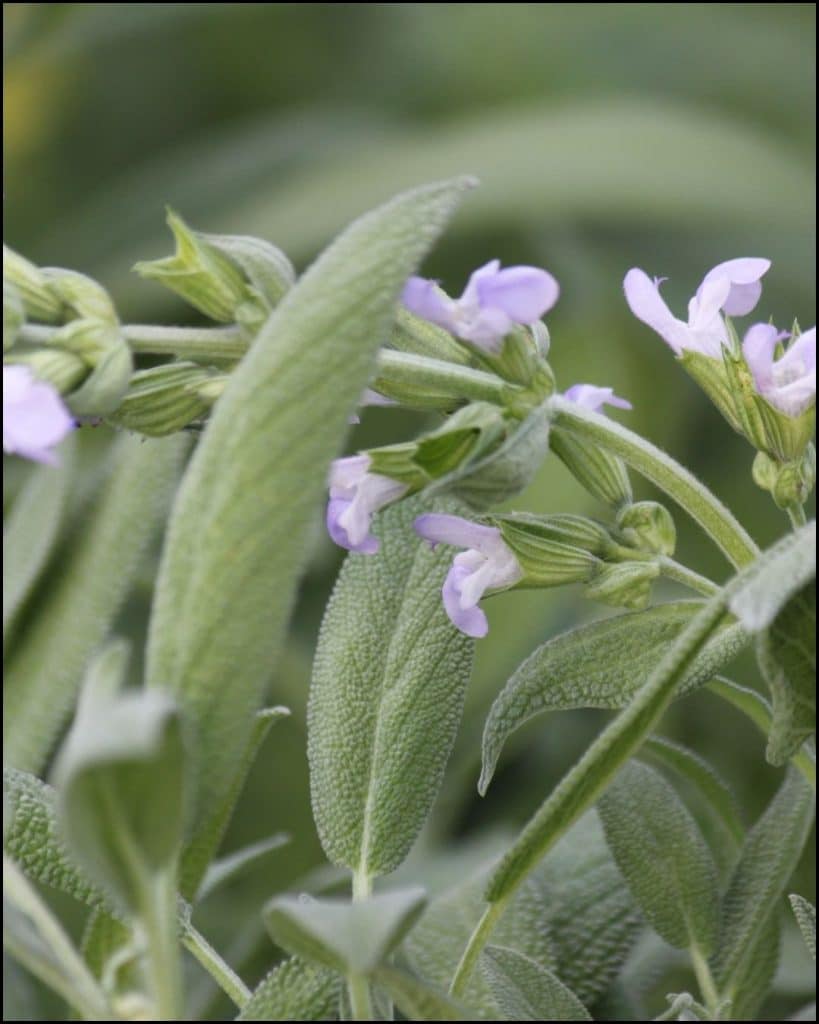
Why They Work
Broccoli belongs to the brassica family, which means it can be prone to pests like cabbage worms and loopers. Sage has a pungent aroma that insects find confusing or unpleasant.
By planting sage near broccoli, you create an environment that’s less welcoming to pests. Sage’s small, woody structure doesn’t take much space, so it won’t overshadow broccoli.
Planting Tips
- Sun & Soil: Both enjoy sun, though sage can manage partial shade. Broccoli prefers cooler weather compared to some summer veggies, but it still needs at least six hours of sun. High-quality soil with good drainage benefits both.
- Spacing & Growth: Sage stays relatively compact, but ensure there’s enough space for broccoli heads to form. Broccoli plants can spread out with large leaves, so keep sage near but not right on top of them.
- Watering Needs: Broccoli needs consistent moisture for steady growth. Sage prefers less frequent watering. A balanced approach is to water more deeply around broccoli, ensuring sage doesn’t get waterlogged.
Additional Advice
- Harvesting Broccoli: Cut the central head before it starts to flower. Many broccoli varieties will then produce smaller side shoots for a continued harvest.
- Using Sage: Sage leaves are excellent in the kitchen, especially for savory dishes. Regular harvesting keeps the sage plant from getting woody and helps maintain its shape.
12. Peas & Mint
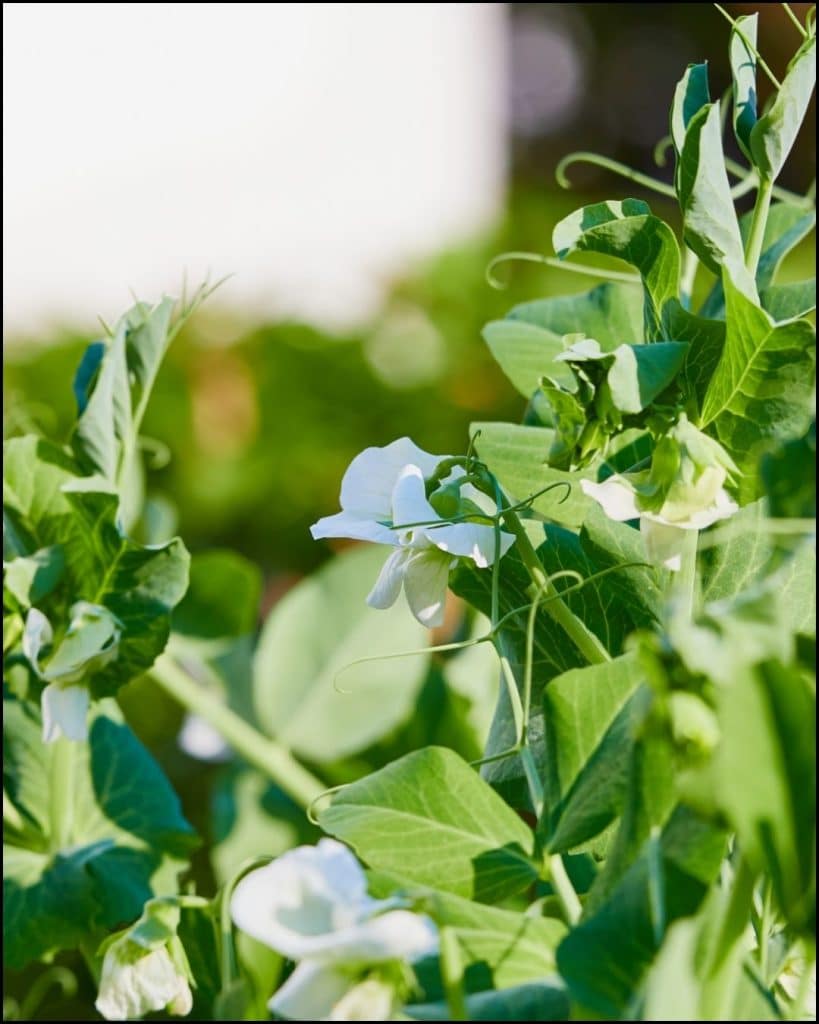
Why They Work
Peas are a gentle plant that climb a trellis or support, while mint is often labeled “invasive” for its tendency to spread.
However, mint’s aroma can repel pests like aphids and even rodents, helping peas stay pest-free. When controlled properly, mint can be an excellent sidekick in a pea patch.
Planting Tips
- Container Boundaries: Consider planting mint in pots or containers that you sink into the ground near your peas. This prevents mint from taking over the entire garden bed.
- Sunlight: Peas can handle full sun to partial shade. Mint prefers partial shade in warmer climates. Try placing mint where it can get a bit of shade during the hottest part of the day.
- Soil & Water: Both enjoy moist, well-draining soil. Peas need regular watering, especially while they flower and produce pods. Mint, with its vigorous root system, also likes consistent moisture but can handle slightly drier times once established.
Additional Advice
- Controlling Mint Spread: Even if you sink pots into the ground, keep an eye out for runners. Mint can shoot out new growth over edges. Trim these regularly to keep the mint contained.
- Harvesting Peas & Mint: Pick peas when their pods are plump but before the peas inside turn starchy. For mint, clip the sprigs as needed, removing the top leaves to encourage a bushier growth pattern.
13. Zucchini & Oregano
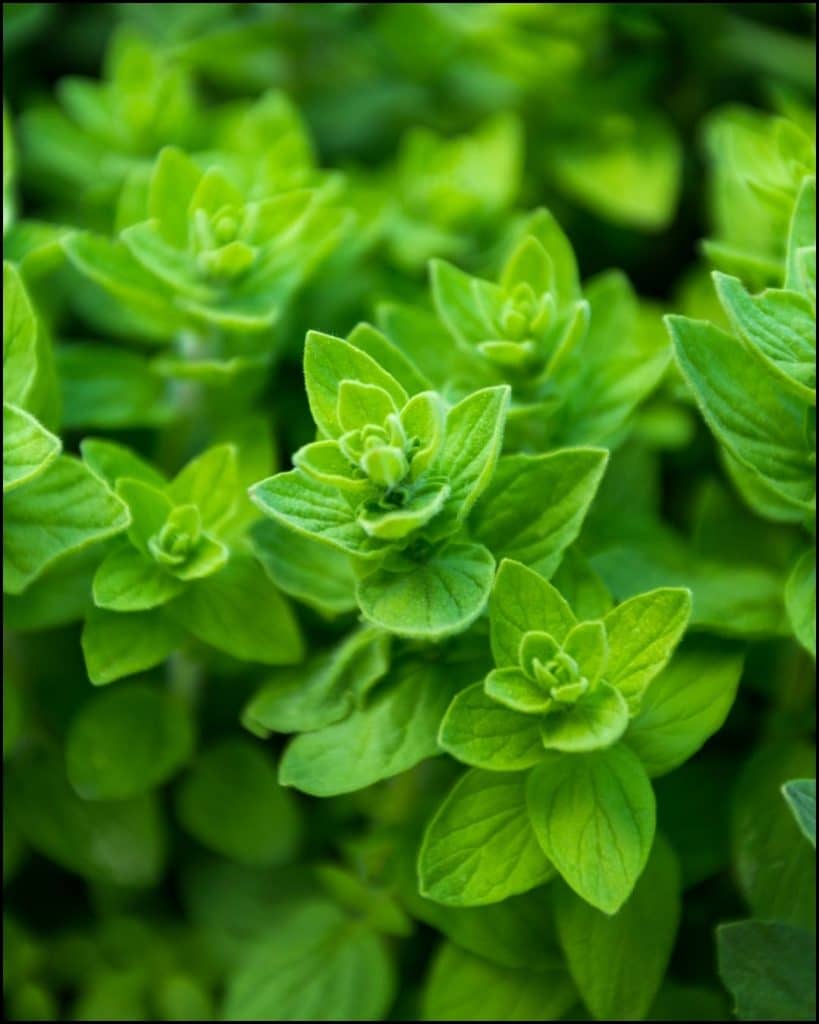
Why They Work
Zucchini plants take up space horizontally, their big leaves shading the ground. Oregano stays low to the soil, forming a fragrant mat that can help deter pests.
This herb can also be harvested regularly, which may release more of its aromatic oils, further discouraging insects.
Planting Tips
- Edging Technique: Plant oregano in a border around or beside your zucchini patch. This positioning allows oregano to form a gentle barrier while zucchini vines expand.
- Soil & Fertility: Zucchini is a heavy feeder and loves compost-rich soil. Oregano will be just fine in similarly fertile ground but doesn’t require as much feeding. Both appreciate well-draining conditions.
- Watering Balance: Zucchini needs consistent watering, especially when fruits start forming. Oregano can tolerate moderate drought but still benefits from occasional deep watering. Just ensure water doesn’t pool around oregano’s roots.
Additional Advice
- Harvesting Zucchini: Pick zucchinis when they’re six to eight inches long for the best flavor. If left too long, they can become oversized and tough.
- Oregano Maintenance: Pinch off leaves and stems often to encourage fuller growth. Flowering can reduce the intensity of oregano’s flavor, so remove flower spikes if you want the strongest taste.
14. Potatoes & Horseradish
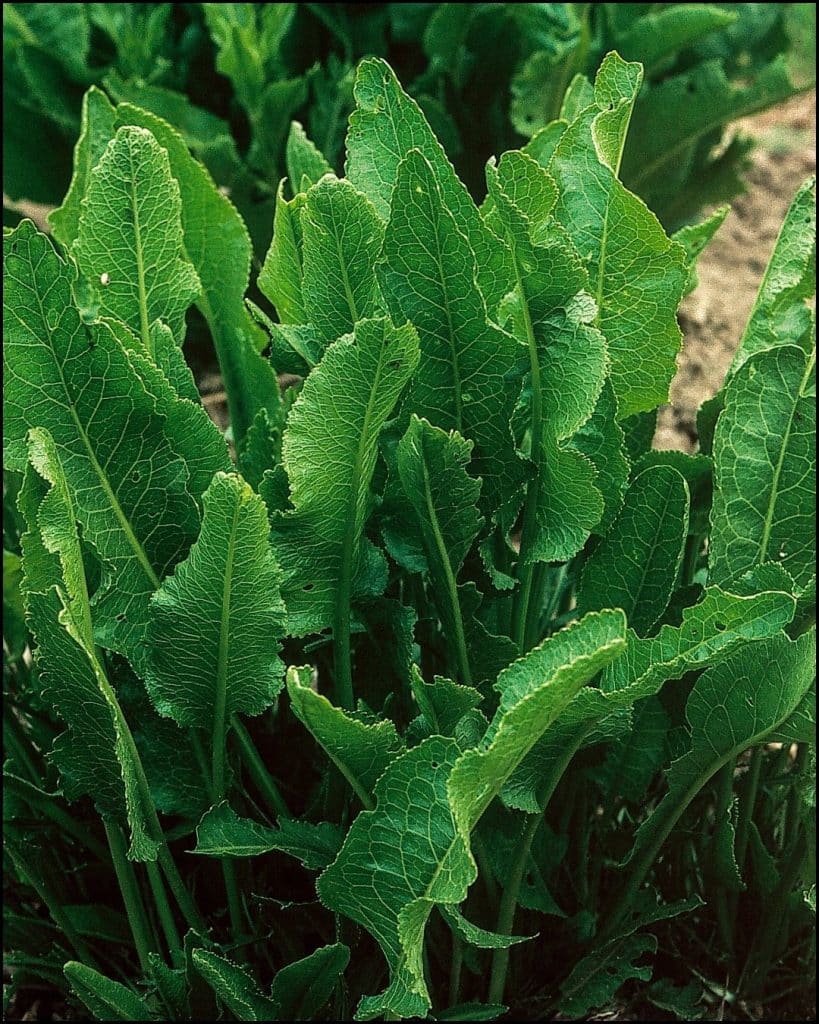
Why They Work
Potatoes are prone to a variety of pests and diseases, including potato beetles. Horseradish emits a strong, pungent scent from its roots and leaves, which can repel certain insects.
Planting horseradish nearby creates a boundary of sorts that keeps pests away from your potato patch.
Planting Tips
- Perimeter Planting: Plant horseradish in a border around your potato bed. Horseradish has deep roots and can spread, so contain it if you don’t want it taking over.
- Soil & Site: Potatoes thrive in loose, well-aerated soil. Horseradish also needs well-draining soil. Both enjoy full sun. Mix plenty of organic matter into the soil to support potato tuber development.
- Water & Fertilizer: Potatoes need consistent watering, especially during tuber formation. Horseradish prefers evenly moist soil as well. Keep an eye on nitrogen levels—excess can lead to lush foliage but fewer tubers.
Additional Advice
- Horseradish Harvest: Typically harvested in the cooler months, horseradish roots can be dug up when they’re thick enough. If you only want a few roots, trim the edges and let the main plant continue growing.
- Potato Care: Mound the soil around potato plants as they grow, covering any tubers that start to surface. Exposed tubers can turn green and become inedible.
15. Corn & Pumpkin
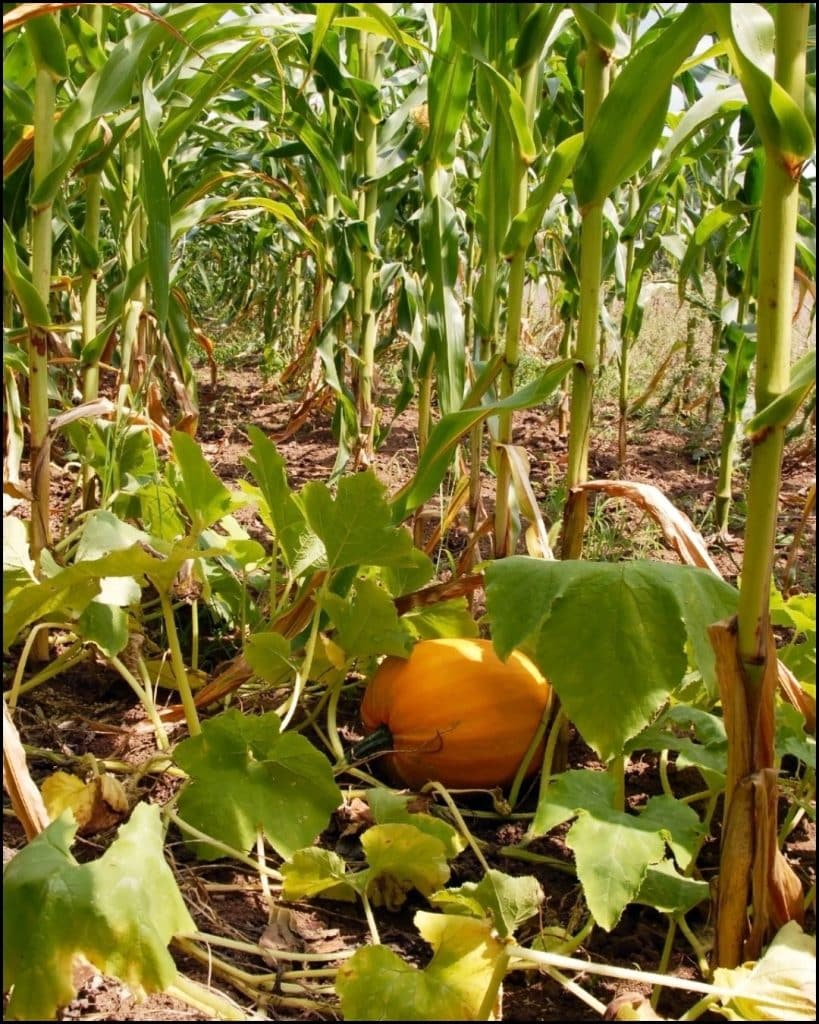
Why They Work
Corn stands tall, and pumpkins sprawl on the ground. The large pumpkin leaves shade the soil, helping lock in moisture and reduce weeds.
In return, the corn provides a natural structure for the pumpkin vines to navigate around, although pumpkins generally sprawl rather than climb. These two have been paired in many American gardens for generations.
Planting Tips
- Cooperative Layout: Plant corn in blocks rather than single rows to help with pollination. When the corn is about a foot high, place your pumpkin seedlings or seeds between the rows. The pumpkin vines will soon begin to roam across the ground.
- Sunlight & Water: Both enjoy warm weather and plenty of sunshine. They’re also thirsty crops, especially pumpkins. Keep the soil consistently moist but not waterlogged. Drip irrigation or soaker hoses can really help.
- Weed Suppression: Pumpkin vines act like a living mulch, covering the soil and blocking sunlight from reaching weed seeds.
Additional Advice
- Pollination Assistance: Corn relies on wind pollination. Gently shake the tops (tassels) of the corn or run your hands through them on a calm morning if you notice incomplete pollination. Pumpkins depend on pollinators like bees, so consider adding pollinator-friendly flowers nearby.
- Harvesting Pumpkins: Wait until the pumpkin’s rind hardens and the stem turns brown before harvesting. This ensures the fruit has matured and will store longer.
FAQs

1. Can companion planting be done in containers or small spaces?
Yes. Even if you’re working with limited space, you can still place complementary plants together in pots or raised beds. For example, tomatoes and basil thrive in a shared container as long as there’s enough room for each root system and they get adequate sunlight. Herbs like thyme or oregano are also excellent container buddies for veggies because they stay relatively compact.
2. Do I need to rotate companion plants every year?
It’s a good idea to rotate crops, especially those prone to soil-borne diseases or heavy nutrient depletion, such as tomatoes, potatoes, or squash. Rotating them with different families of plants (and their companions) can help break pest cycles and replenish soil fertility. Even if you keep the same companion pairs, try to place them in different parts of the garden each season.
3. Are flowers always beneficial as companion plants?
Many flowers attract beneficial insects and deter harmful ones. Marigolds, nasturtiums, calendula, and sunflowers can all help create a balanced ecosystem. However, some flowers may compete for nutrients or sunlight. It’s best to pick flowers known to offer clear advantages, like marigolds deterring nematodes or nasturtiums acting as a trap crop for aphids.
4. How close should companion plants be placed?
Proximity matters when the companion effect relies on scent or root excretions. Typically, planting companions within a couple of feet is enough for smaller plants. For larger plants like tomatoes and corn, grouping them in the same bed or the row next door can still help. Just be sure not to crowd them to the point where airflow is compromised.
5. Will companion planting completely eliminate the need for pesticides?
While it can significantly reduce pest problems, it may not eliminate them entirely. Companion planting is one piece of a broader, more natural approach to pest management. Adding practices like crop rotation, healthy soil maintenance, and biological controls (like ladybugs or lacewings) will further decrease the likelihood of major infestations.
6. Do companion plants always improve flavor?
Some gardeners swear that basil gives tomatoes a richer taste or that mint perks up peas. While scientific evidence varies, the general agreement is that certain aromatic herbs can indeed influence the flavor profiles of nearby plants. The improved flavor could be partly due to better pest control and overall healthier plants.
7. What if I can’t find the suggested companion plant in my area?
Feel free to experiment with similar herbs or flowers that offer similar benefits. For example, if you can’t find nasturtiums, try another pest-attracting flower like calendula. If basil isn’t available, other fragrant herbs like oregano or marjoram might help repel pests near tomatoes. Creativity and flexibility are key.
8. Is companion planting suitable for all climates?
It can be adapted to most climates with a few adjustments. The success of each pair depends on matching plants that can handle your local temperature ranges and rainfall patterns. For instance, if your climate is very hot and dry, pick drought-tolerant herbs like thyme or sage to grow next to thirsty veggies. Always select varieties suited to your growing zone.
9. Can I mix multiple companion planting pairs in one large bed?
You can. Many gardeners enjoy creating “guilds” where several beneficial partners come together. Just be mindful of spacing and consider the different heights of plants. For instance, you might have tall corn, climbing beans, and ground-cover squash, with a few marigolds or nasturtiums sprinkled around. Keep track of plant needs and ensure none are overshadowed or starved of nutrients.
10. How do I know which companion plants are best for beginners?
Try simple, classic pairs like tomatoes and basil, peppers and marigolds, or beans and corn. These are low-fuss combinations that rarely disappoint. They’re easy to grow and often yield noticeable benefits in terms of pest control and crop health.
All of these pairs can help create a healthier, more productive garden, whether you’re working with a large plot or a few containers on a patio.
The secret is noticing how each plant’s growth habits, root needs, and aromatic qualities can support (or hinder) its neighbors. By combining thoughtful planting with consistent care, you’ll enjoy richer harvests and fewer pest problems.
Enjoy the process of experimenting, and don’t be afraid to mix and match until you find the perfect companions that resonate with your garden’s unique rhythm.